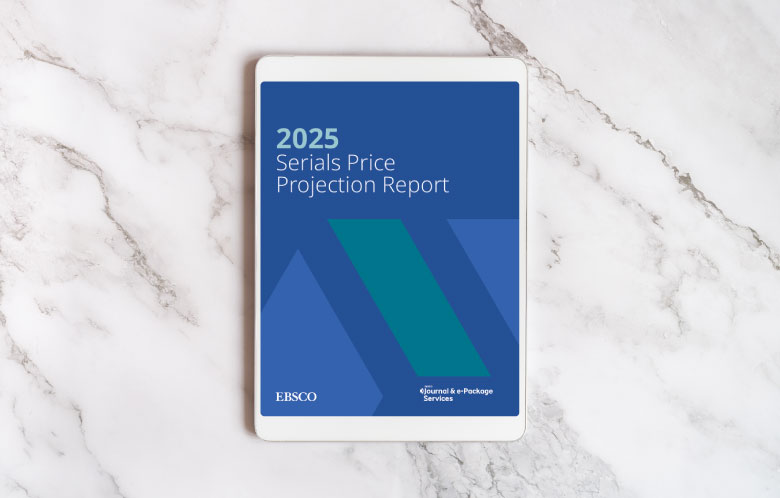Peer-reviewed academic literature remains a foundational, yet often underleveraged, resource for strengthening decision-making at every stage of the development pipeline.
While internal and even real-world data is critical, literature fills a different and equally important role. It brings external validation, contextual benchmarks, and clinical precedent, which is especially vital for teams making time-sensitive decisions across preclinical, clinical, and regulatory functions.
According to a recent industry survey, 39% of R&D executives rank improving R&D productivity as a top priority, while 56% believe rethinking their overall portfolio strategy is essential to maximizing ROI.
The past several decades have fundamentally reshaped and exponentially accelerated pharmaceutical development, with breakthroughs like checkpoint inhibitors, CAR-T therapies, and next-generation antibody-drug conjugates redefining both scientific possibility and commercial expectations. As scientific discovery accelerates, staying informed is not optional.
At the same time, the looming patent cliff, with 30% of companies citing it as a significant concern, intensifies the urgency of finding and prioritizing new molecules, mechanisms, and opportunities before market exclusivity erodes.
This post will explore how roles across pharmaceutical and biotech organizations use academic journals to solve discipline-specific challenges, enhance decision-making, and align their work with the broader scientific community.
Explore How Different Roles Use Peer-Reviewed Research
Peer-reviewed academic literature supports critical decisions across teams involved in drug development and commercialization. Whether you’re shaping pipeline strategy, engaging the clinical community, or managing operational timelines, the right information at the right time can change the trajectory of a program.
Use the links below to jump to the section most relevant to your role or area of interest:
Strategic and Life Sciences Principals
Medical Affairs Leaders
Research & Development Leaders
Project Management Office (PMO) Leads
Business Unit Heads and Therapeutic Area Leaders
Chief Scientists
For Strategic and Life Sciences Principals: Turning Emerging Science Into Strategic Direction
Early-stage scientific decisions carry long-term consequences. For senior leaders responsible for evaluating new mechanisms and setting pipeline direction, staying ahead of shifting evidence, emerging targets, and competitor activity demands constant engagement with the literature, not summaries or secondhand data, but original research that informs action.
Academic journals are vital compasses. They allow principal investigators and scientific leads to validate emerging pathways—such as CD47, STING, or KRAS G12D—by reviewing foundational work and competitive insights. For example, articles in Wiley’s Cancer Journal or Taylor & Francis’ Oncology, might help a lead scientist determine whether a novel immune checkpoint mechanism has enough translational support to warrant investment in preclinical models.
This literature is not just a reference, it is a strategy. By aligning early research with credible, peer-reviewed data, scientific leaders are better equipped to prioritize targets, design model systems, and defend the rationale in regulatory or investor settings. Access to timely, high-quality research is a direct enabler of forward-looking, science-first leadership.
For Medical Affairs Leaders: Building Scientific Credibility in the Field
For medical affairs teams, credibility hinges on precision. As clinical data evolves and standards of care shift, literature remains the most defensible source for aligning internal narratives with external expectations. Whether supporting MSL engagement, scientific exchange, or publication strategy, timely access to authoritative research is non-negotiable.
This often means pulling insights from journals to contextualize company-sponsored data about broader standards of care. For example, when launching a new immunotherapy in HCC, a medical affairs lead might compare their trial outcomes with recently published studies from competing checkpoint inhibitors to ensure that messaging is on point and scientifically defensible.
Literature also supports the development of slide decks, symposia content, and field Q&A documents—especially when internal data is still emerging or when engaging with KOLs who are deeply familiar with the evolving science. Here, the value of academic journals lies in equipping teams to speak the language of clinicians and researchers with accuracy and authority.
For Research & Development Leaders: Bridging Science and Execution
R&D leaders live at the intersection of laboratory and clinic. Their role requires taking early discoveries and shaping them into viable development programs. Peer-reviewed literature provides a foundation for informed judgment—offering the scientific precedent and external context needed to support regulatory alignment and internal confidence.
Academic journals are a core part of this process. For instance, a lead evaluating a novel IL-23/IL-17 inhibitor in autoimmune disease might consult recent studies in Clinical & Experimental Immunology to assess how similar agents have modulated inflammatory pathways in preclinical or early-phase trials. That literature can inform both dosing strategy and biomarker selection, ensuring the development plan is aligned with current scientific understanding and regulatory expectations.
Later, when preparing an IND submission, referencing published safety and pharmacokinetic data from structurally related compounds can strengthen the scientific rationale and support dose selection. In all of this, peer-reviewed research functions as both a validation tool and a blueprint for development, helping R&D leaders reduce risk and move faster.
For Project Management Office (PMO) Leads: Planning with Precision
Published trial data provides a critical reference point for project planning—offering insight into enrollment durations, common delays, and how study designs evolve in practice. For PMO leads managing complex timelines, these benchmarks help surface operational risks early and ground decisions in precedent rather than assumption.
This is where literature becomes a practical tool. PMO leads can anticipate enrollment slowdowns, regulatory delays, and other operational risks by reviewing timelines from similar Phase II studies, often detailed in retrospective analyses or published trial reports. These data-driven benchmarks help align teams around timelines that reflect precedent, not best-case assumptions.
Journals also help PMOs communicate risk. If a published study in Clinical Trials shows that 30% of similar programs experience patient attrition in a given tumor type, the PMO can proactively flag that in planning documents. Access to the literature allows PMOs to anticipate obstacles, justify contingency plans, and ensure that project timelines are based on evidence, not best-case assumptions.
For Business Unit Heads and Therapeutic Area Leaders: Aligning Science and Strategy
Business leaders need more than just scientific understanding, they need to understand which science is worth funding. Peer-reviewed literature provides an external check on internal enthusiasm, helping teams evaluate whether a mechanism is saturated, whether an indication is shifting, and whether the evidence behind a candidate holds up to scrutiny. It is not about more data, it is about the correct data, at the right time, to make confident calls.
For example, a business lead evaluating expansion opportunities for a rare neurodegenerative therapy might turn to recent studies in Alzheimer’s & Dementia: The Journal of the Alzheimer’s Association to assess how emerging biomarkers are shaping trial design and market entry strategies. These insights can inform go/no-go decisions, highlight differentiation risks, or help refine how the asset is positioned in strategic discussions with internal stakeholders or external partners.
Moreover, publications offer a non-promotional, objective view that supports scientific credibility in investor decks and strategic planning sessions. For commercial leaders, peer-reviewed journals are less about evidence generation and more about evidence alignment—ensuring that business decisions reflect what the scientific community values and expects.
For Chief Scientists: Steering Innovation at the Organizational Level
Chief scientists set the scientific tone and trajectory for the organization. They are responsible not just for overseeing today’s programs but also for preparing the company for tomorrow’s breakthroughs. That requires a constant awareness of what is happening across the global research landscape.
Academic journals provide that visibility. Whether following advances in gene therapy for rare diseases in Human Gene Therapy or tracking early-stage innovation in neurodegenerative research in Annals of Neurology, a chief scientist uses literature to identify scientific inflection points, often well before they reach commercial or clinical consensus.
Literature also guides partnership conversations and internal prioritization. When deciding whether to allocate resources to CAR-NK or TIL therapies, the chief scientist may review publication volume, clinical success rates, and trial outcomes to determine strategic fit. In this role, scholarly content is not just informative but foundational to long-term innovation planning.
One Source, Many Uses
From the lab to the boardroom, oncology professionals rely on academic journals for far more than reference. Literature provides direction, justification, benchmarking, and credibility, tailored to the unique needs of each role.
- For scientific leads, it offers validation.
- For medical affairs, alignment.
- For R&D, acceleration.
- For project managers, foresight.
- For business heads, clarity.
- And for scientific executives, vision.
Regardless of role or function within the pipeline, one thing is clear: access to peer-reviewed academic journals is not just helpful, it is mission-critical. Tailoring access to a team’s therapeutic focus, workflow, and responsibilities significantly amplifies its impact.



